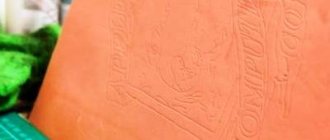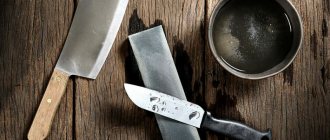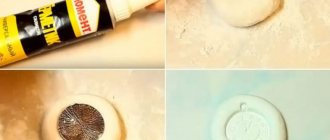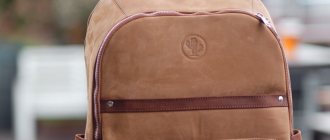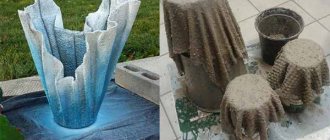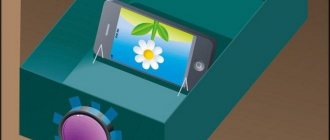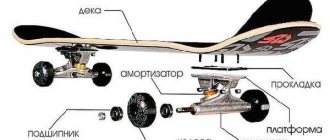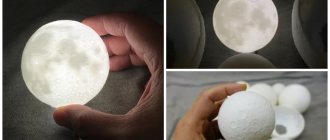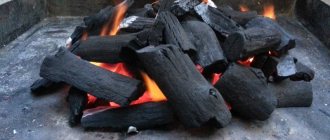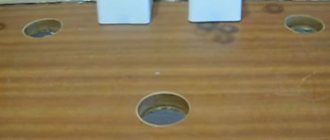Brass die bases have become very popular due to their durability and good engravability. The heat-resistant structure prevents bending and deformation. To increase rigidity, reinforcement is used: a metal base that is fixed to the stamp. This technology increases thermal capacity and rigidity.
Magnesium branding is an economical option with a lower level of rigidity. This material is more suitable for embossing leather, notepads, and soap. The low cost is due to the softness of the material: magnesium is 2 times easier to engrave than brass.
We make wood stamps according to the customer’s individual design. You send us a drawing or an inscription that needs to be engraved, and we make a product based on it. Engraving is done on brass with a width of 12 mm. It is possible to produce cliches of any size, but it is worth considering that for complex layouts with a large number of small lines it is necessary to use more brass.
The burning cliche can be equipped with a soldering iron or a hairpin with a handle. Depending on the size, we select the required power of the soldering iron and make an adapter that allows you to fix the product on it. You can buy a tree stamp from us in cash or by bank transfer. We can deliver within Belarus by delivery service or in Minsk by courier.
Making clichés for embossing, burning, thermal transfer
Requirements
To make cliches, the customer must provide the following materials.
Technical specifications, which indicate:
- cliche sizes;
- material from which the cliche will be made (copper / brass);
- material thickness (mm);
- for what type of work will the cliche be used (embossing / embossing / embossing foil stamping, etc.);
- depth of etching or engraving of space elements (mm);
- depth of etching or engraving of embossing elements (mm);
- the dimensions of the margins for cutting the cliches (as the distance from the image or from the crosses on all 4 sides) and the cutting angle, or the dimensions of the cliche mounting step (mm).
Maximum cliche sizes.
Made of copper: 457 x 457 mm.
Made of brass for wood burning: 280 x 400 mm.
Thickness of cliche material:
Copper: 2 / 6.35 / 7 mm.
The production of cliches is carried out in two ways, using laser engraving and milling and engraving equipment.
Laser engraving has a number of advantages over traditional milling:
- fast material processing;
- high image detail ( 760 dpi );
- lower cost;
- applying images to hard metals;
- cliches for embossing and thermal transfer;
- Press forms;
- stamps;
- electrodes-tools.
Cliche for wood burning
The cliche for wood burning is made of 8mm thick brass.
A cliche for burning on wood (stamp for burning on wood) is used with a soldering iron with a power of 40-500W. The power is selected by our specialists individually for each cliche; only if this condition is met, the excellent quality of the prints on your products and the absence of defects during branding are GUARANTEED. It differs from a regular cliche by the presence of a threaded hole through which the cliche is attached to the heating element.
The cost of making brass cliches for wood burning (excluding the cost of a soldering iron and the cost of attaching the cliche to the soldering iron) depends on the area of the cliche:
| Square cliche | Price UAH per 1 cm2 |
| up to 5 cm2 | 500 UAH for all cliches |
| from 6 to 10 cm2 | 90 UAH |
| from 11 to 15 cm2 | 85 UAH |
| from 16 to 20 cm2 | 80 UAH |
| from 21 to 25 cm2 | 75 UAH |
| from 26 to 30 cm2 | 70 UAH |
| from 31 to 35 cm2 | 65 UAH |
| from 36 to 40 cm2 | 60 UAH |
| from 41 to 45 cm2 | 55 UAH |
| from 46 to 50 cm2 | 50 UAH |
| from 51 to 55 cm2 | 45 UAH |
| from 56 to 60 cm2 | 40 UAH |
| over 60 cm2 | price negotiable |
Calculation of heating element power
Calculation of the power of the heating element of a cliche for wood burning.
The calculation of the power of the heating element directly depends on the area of the cliche and its shape. Most often, powerful soldering irons are used as a heating element for these purposes.
Since the heating of the soldering iron tip is evenly distributed relative to its longitudinal axis, the most optimal shape for heating the cliche is a circle.
The table shows the dependence of the maximum areas of the cliches on the power of the soldering iron used.
| Round cliche area (cm2) | Soldering iron power (W) |
| 9 | 100 |
| 55 | 300 |
| 98 | 500 |
| Square cliche area (cm2) | Soldering iron power (W) |
| 6 | 100 |
| 36 | 300 |
| 64 | 500 |
From the table above, it will be possible to determine the required power of the soldering iron, at which the cliche installed on the soldering iron will heat up at room temperature within 10 minutes and leave a clear image on dry and even wood.
The cliche is made on milling and engraving equipment
Source: laserart.ua
Markings on spoons
Modern industry does not produce devices from precious metals for mass consumption due to their fragile structure and high cost. To improve the quality and increase the service life of products, various metal alloys are used, giving an external resemblance to gold or silver.
High-quality tableware is indicated by markings, thanks to which you can determine the alloy material used to make the product. Domestic manufacturers, when minting a mark on a spoon, use the following designations in marking:
- MELCH (MN) – cupronickel alloy;
- MNC – analogue of cupronickel – nickel silver;
- AL – aluminum;
- STAINLESS – made of stainless steel.
Some devices are covered with a thin layer of precious metal on top. In this case, a double mark is applied, which includes an indication of the sample number. Silver spoons are marked using the numbers 925.
Many buyers confuse nickel silver devices with nickel silver alloy, which is explained by the high degree of external similarity of the materials. Their difference is that by adding manganese, a cupronickel silver product is obtained, and nickel silver is an alloy that includes zinc. The basic basis of both materials is the same - it is copper with nickel. Having studied the markings, the buyer will be able to find out the composition of the MNC alloy on the spoon, what it is, and how much such spoons cost.
How to make a tree stamp?
I can’t show you, Oleg, because I don’t have a sample. (My own, as I already said, I did myself. And from the very beginning - to friends and acquaintances. Exactly in the same way as the Skeptic described). I can guess. A digital sketch, a computer connected to some kind of machine (maybe an electric spark machine, maybe the same laser) - that’s it! Embossing on book covers in printing houses is done precisely with the help of such thermal stamps, on special tiny thermal presses. Heating is very small. If the embossing is colored or gilded, it is done accordingly. foil. Only there, due to the low temperature, the stamp material is zinc. For wood you just need copper or brass. Stamps used to be made by engravers, but now this is the “equipment”. ;((
I don’t know about the laser, but it was easy to do with a CNC milling machine (produced by CMEA). And even more so on modern ones (if the processing program is properly constructed)
Oleg, which ones are “deep”? 1 mm, or something, or 0.5 mm. What garbage - on soft metals! %%% The machine does it even faster! 20 minutes is enough for the “master” to scratch himself, smoke a cigarette and slowly press the “Start” button! %%%
- Login or register to post comments
Boris Ivanov
- Login or register to post comments
Ivan Chonov
. interesting - I wanted to make the stamp myself, but I refused for now, the technical complexity is too much for me
टिप्पणियाँ • 26
Otherwise, I didn’t watch the videos)
Tell me... can I order a stamp from you?
It is unlikely. It is a very labor-intensive process of creating a stamp by hand. The accuracy is low, the probability of error is high, and manual labor is not cheap. Yes, and it’s not mine. I made it for myself.
And it is advisable to understand the price
What is the best way to make a brand?
Brass or bronze (it seems to me) has good thermal conductivity and relative ease of processing.
As I understand it, easy paths are not for the author. My easy way would be this: draw what you need on paper, scan it, mirror it and print it on a laser print. Transfer to the workpiece according to LUT and etch in half an hour. So that is all!
@Vit Kh I’m on first-name terms with the computer. But isn’t it expensive to buy a scanner or a printer for one operation if I no longer need it? You would also suggest buying a CNC machine, with a metal cutter, for one operation. But it will engrave in general, with an accuracy of one micron, exactly.
living Wood, no power needed. 6-12 V 0.3-1A is enough
@living Wood Actually, they say that a mobile phone charger is enough. I haven't tried it myself, I don't know. By the way, when I get back from vacation, I’ll have to try making myself a stamp at work. I watched the videos on YouTube and they turned out great. And with an engraver you need perseverance and a steady hand. But you did it, well done. I am also like that by nature. My work colleagues are surprised by my hobbies.
@Vit Kh Fortunately, we have a very close relationship with the computer, but what if we need to do it, but we don’t have a laser printer or scanner at hand. Although I do not deny that etching will give a better result, it does require a fairly powerful power supply.
@living Wood why? It is more convenient to draw on paper. Yes, and on a larger scale it is possible. Converting a scanned drawing to any size on your computer is a matter of minutes. Well, this is, of course, if you are familiar with the computer. Iron onto the workpiece for a couple of minutes. Is this a lot of operations? And etching gives a better result. But these are all my thoughts and opinions. If you like the engraver, God will help you.
I do not understand. There is a lathe, but I sawed the blank with a hacksaw. Aren't you looking for easy ways?
@Sting well yes. It’s just that everything just won’t work out.
@living Wood It happens. But, if you have a lathe, then you can go broke on a cutter, at least one.
There is not a single cutting tool, and the angle grinder is without a stone
I coat it with paint based on resin-phenol, in Holland it goes under the brand name Bielzen, it dries for 4-6 hours, when dried it can be easily washed off with gasoline and dries, then I take my homemade microscope for radio electronics, and under the microscope with a steel needle I draw what I need, magnification microscope 100-120 times, then with a cotton swab soaked in a saline solution of 12 volts, 300 mA, a higher amperage is not needed, it gets hot and the result is worse, I etch the drawing. The stamp turns out like a jeweler’s mark, or even less, I tried not only numbers but also inscriptions, then You can barely see it with a magnifying glass. After many experiments, this paint is the best mixture, it sticks well, does not take on acids and aggressive materials and is easily removed, it is a type of paint for sleepers, only the Dutch one does not smell and dries quickly.?
Thank you very much for such a detailed and voluminous explanation. You will definitely have to try it. Thank you
It’s easier to mirror by placing a sheet of paper on the window glass and tracing it! Or glass and lighting from below.
Isn’t it easier to place a carbon copy under the drawing with the reverse side and circle it. The other side will have a mirror image.
Thermal stamps, thermal stamps
Thermal stamp manufacturing technology
Thermal stamp with restaurant logo
Thermal stamp (thermal stamp, burning mark) is widely used in industry and in the production of promotional products. The main purpose of thermal stamps is to obtain impressions on all kinds of surfaces, such as wood, plastic, leather, etc. Thermal stamps are widely used in industry and in the production of promotional products. The main purpose of thermal stamps is hot stamping on various materials, such as wood, plywood, leather, etc. Technologically, a thermal stamp is a metal plate (cliché), made by industrial engraving, mounted on a heater. The most common material for thermal stamps is brass. Brass thermal stamps are quite durable and can withstand temperatures at which they leave a clear imprint on the material. Moreover, what is important, they are not subject to corrosion. Copper is also an excellent material for a thermal stamp. As we all remember from our school physics course, copper has excellent thermal conductivity. Therefore, its use is especially justified in the manufacture of small thermal stamps. In cases where the operating conditions of the stamp are particularly severe (load, temperature), it is possible to produce steel thermal stamps.
Most often, wood and plywood are marked using thermal stamps and thermal stamps. This is an excellent option for effective branding of products, making original packaging, souvenirs and gifts.
Thermal stamps are even used in the food industry: restaurants use them, for example, to mark steaks (restaurant logo, degree of doneness: MEDIUM, RARE, DONE). There are options for using thermal stamps to mark dough and vegetables for an impressive presentation of a dish. The material of such cliches is brass. This metal is used when working with food products. For example, veterinary stamps are made according to GOST from brass. The handle is made of brass, steel and wood.
Thermal stamp imprint on leather of different colors
It is possible to use thermal stamps on plastic, but in this case the skill of the operator and control of the temperature of the thermal stamp come to the fore - plastic in this sense is much more capricious than wood.
The same marks are used for leather as for wood. The impression on the leather turns out dark brown, closer to black, so it is better not to use black leather for branding.
In a word, thermal stamping is applicable for materials that change structure when exposed to high temperatures.
Thermal stamp for pallets and pallets (Phytosanitary stamp)
Stamp on pallets. Pallets, or pallets, are made from metal, plastic or wood. Most often, the raw material for pallets is fresh wood, which may contain beetle larvae, mold, and so on, so phytosanitary treatment is carried out followed by the application of a phytosanitary stamp. Applying the EUR mark (wooden “Euro pallet”) and EPAL (European Pallet Association mark) serves to control the quality of pallets - both of these marks indicate that no errors were made during production and the pallet meets all standards and requirements.
The phytosanitary mark is confirmation of disinfection, and is a special marking applied to the pallet (Euro pallet). Organizations that disinfect wood packaging or fastening materials confirm the compliance of the technologies they use and are assigned the appropriate registration number by the national service for quarantine and plant protection. This number is included in the markings applied to wood packaging and fastening materials. In addition to the indicated number, the marking must contain the country code, as well as the abbreviated name of the disinfection method used. Marked pallets may, without additional phytosanitary control, have free circulation in international trade, and in the absence of such marking, they may not be accepted by countries that have introduced the specified phytosanitary measures, or accepted based on the results of phytosanitary control. At the customer's request, we will produce a phytosanitary stamp for a specific enterprise.
Stamp for burning on a soldering iron (for making an impression on wood, leather)
What cliche size should I choose?
The size of the cliche is determined primarily by needs. Needs should be divided into strictly regulated (GOST, technical specifications, drawing) and relatively free, i.e. allowing options.
In the first case, everything is adjusted to the regulations. Secondly, it will be useful to know that the larger the area of the cliche, the greater the vulnerability from unevenness of the working surface. Not everything that looks smooth actually is. We guarantee an absolutely flat surface of the cliche relief. A hard, uneven surface (wood, plastic) makes it difficult to make a high-quality impression. In such cases, the less cliché, the less this vulnerability. Consider the feasibility of making a large cliché. Choose smaller clichés if possible.
Which heater should I choose?
The speed at which the cliche is heated to operating temperature depends on the power of the heater. The larger the cliche area in the size range for a specific heater, the longer the cliche takes to heat up. The more powerful the heater, the faster it will heat the cliche.
We have selected a set of stamps and offer a heater designed so that it heats the largest cliche in its size range in no more than 30 minutes at room temperature without drafts.
Comments • 26
Otherwise, I didn’t watch the videos)
Tell me... can I order a stamp from you?
It is unlikely. It is a very labor-intensive process of creating a stamp by hand. The accuracy is low, the probability of error is high, and manual labor is not cheap. Yes, and it’s not mine. I made it for myself.
And it is advisable to understand the price
What is the best way to make a brand?
Brass or bronze (it seems to me) has good thermal conductivity and relative ease of processing.
As I understand it, easy paths are not for the author. My easy way would be this: draw what you need on paper, scan it, mirror it and print it on a laser print. Transfer to the workpiece according to LUT and etch in half an hour. So that is all!
@Vit Kh I’m on first-name terms with the computer. But isn’t it expensive to buy a scanner or a printer for one operation if I no longer need it? You would also suggest buying a CNC machine, with a metal cutter, for one operation. But it will engrave in general, with an accuracy of one micron, exactly.
living Wood, no power needed. 6-12 V 0.3-1A is enough
@living Wood Actually, they say that a mobile phone charger is enough. I haven't tried it myself, I don't know. By the way, when I get back from vacation, I’ll have to try making myself a stamp at work. I watched the videos on YouTube and they turned out great. And with an engraver you need perseverance and a steady hand. But you did it, well done. I am also like that by nature. My work colleagues are surprised by my hobbies.
@Vit Kh Fortunately, we have a very close relationship with the computer, but what if we need to do it, but we don’t have a laser printer or scanner at hand. Although I do not deny that etching will give a better result, it does require a fairly powerful power supply.
@living Wood why? It is more convenient to draw on paper. Yes, and on a larger scale it is possible. Converting a scanned drawing to any size on your computer is a matter of minutes. Well, this is, of course, if you are familiar with the computer. Iron onto the workpiece for a couple of minutes. Is this a lot of operations? And etching gives a better result. But these are all my thoughts and opinions. If you like the engraver, God will help you.
I do not understand. There is a lathe, but I sawed the blank with a hacksaw. Aren't you looking for easy ways?
@Sting well yes. It’s just that everything just won’t work out.
@living Wood It happens. But, if you have a lathe, then you can go broke on a cutter, at least one.
There is not a single cutting tool, and the angle grinder is without a stone
I coat it with paint based on resin-phenol, in Holland it goes under the brand name Bielzen, it dries for 4-6 hours, when dried it can be easily washed off with gasoline and dries, then I take my homemade microscope for radio electronics, and under the microscope with a steel needle I draw what I need, magnification microscope 100-120 times, then with a cotton swab soaked in a saline solution of 12 volts, 300 mA, a higher amperage is not needed, it gets hot and the result is worse, I etch the drawing. The stamp turns out like a jeweler’s mark, or even less, I tried not only numbers but also inscriptions, then You can barely see it with a magnifying glass. After many experiments, this paint is the best mixture, it sticks well, does not take on acids and aggressive materials and is easily removed, it is a type of paint for sleepers, only the Dutch one does not smell and dries quickly.?
Thank you very much for such a detailed and voluminous explanation. You will definitely have to try it. Thank you
It’s easier to mirror by placing a sheet of paper on the window glass and tracing it! Or glass and lighting from below.
Isn’t it easier to place a carbon copy under the drawing with the reverse side and circle it. The other side will have a mirror image.
How to make a tree stamp
by - refers to one of the ancient types of artistic graphics and decorative processing. The origins of hot wood stamping originate in Russian folk art.
- euro pallets or pallets
- lumber and furniture boards
- graphics on souvenirs, on signage, etc.
The modern type of processing is carried out using a special one , on the surface of which an individual design is engraved. The imprint remains on the wooden surface thanks to the work of the burning element, which heats the metal to a certain temperature. For best artistic effect, it must be pre-treated. It is also used for marking, decorating and designing various wood materials. Our company offers you metal ones that will perfectly decorate any type of wooden product.
The price starts from 1,400 rubles and depends on the size, complexity of the design, and the presence/absence of a heater in the kit.
You can order a cheap cliche for burning on wood from our printing house by phone or by sending a request by email. Our company produces all types of stamps and cliches for burning on wood, embossing on leather, paper, and other materials. We have favorable prices for all products, thanks to our own production and optimization of material consumption. We carry out orders of any complexity within the agreed time frame. We work seven days a week, so we can complete urgent work in the shortest possible time.
Album in handmade leather from the Bulanti workshop.
Testing and marking: current legislation
Today, the affixing of state hallmarks is carried out by the Assay Chamber under the Ministry of Finance of the Russian Federation. This state institution is vested with such powers in accordance with the Decree of the Government of the Russian Federation No. 106 “On the Russian State Assay Office”.
Absolutely all products made of precious metals produced in Russia must comply with current standards. All samples are defined in the Decree of the Russian Federation No. 643 “On the procedure for assaying and branding products made of precious metals.” In addition, all such products must be branded with the state mark.
The importance of phytosanitary treatment of wooden containers
Do not assume that wooden pallets with a brand are just a bureaucratic formality. Like other natural materials, wood is susceptible to destruction by bacteria, insects and rodents. Regular phytosanitary treatment of wooden containers increases the service life of boxes and pallets, thereby saving your budget for their purchase.
The IPPC stamp on pallets provides other benefits:
- customs clearance is simplified;
- The consumer properties of products transported in containers are preserved longer;
- IPPC phytosanitary stamp is required to cross the border when exporting goods abroad.
Contacting us will allow you to resolve all issues with cleaning and labeling containers and obtaining the necessary certificates.
In what cases does wooden packaging require disinfection?
Comprehensive disinfection must be carried out for all boxes, pallets and containers that are in use. Even if you purchased a new container, it must be treated for pests before use. Many manufacturers and product suppliers purchase used pallets and boxes, which are cheaper than new ones. Such containers also need to be treated before use.
: Stencil
Cut out the desired design from a sheet of vinyl. It will have to be made absolutely tiny!
Remember that the design will have to be drawn backwards, especially if it is text - as with everything related to printing. It must be flipped horizontally to show up properly on the wood.
Firmly glue the workpiece to the nail head.
